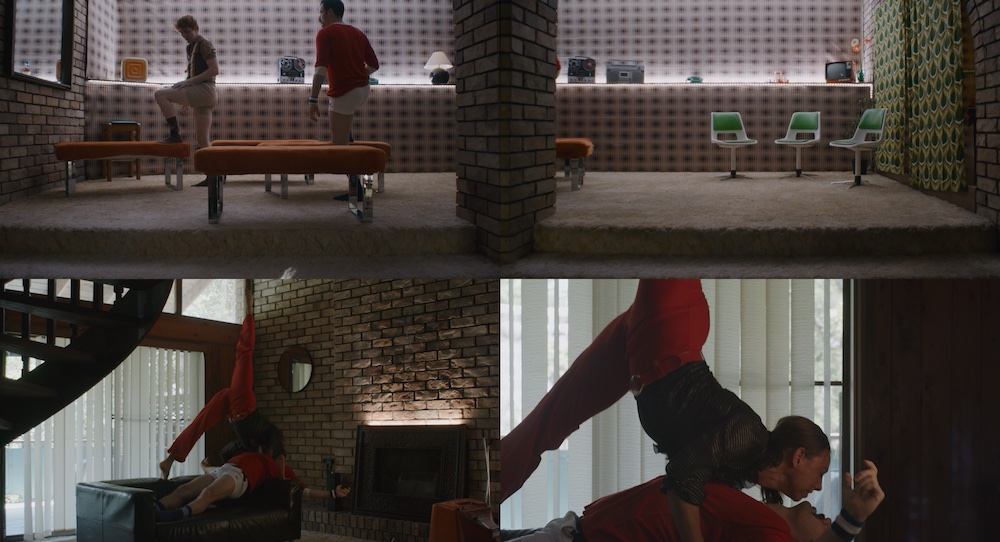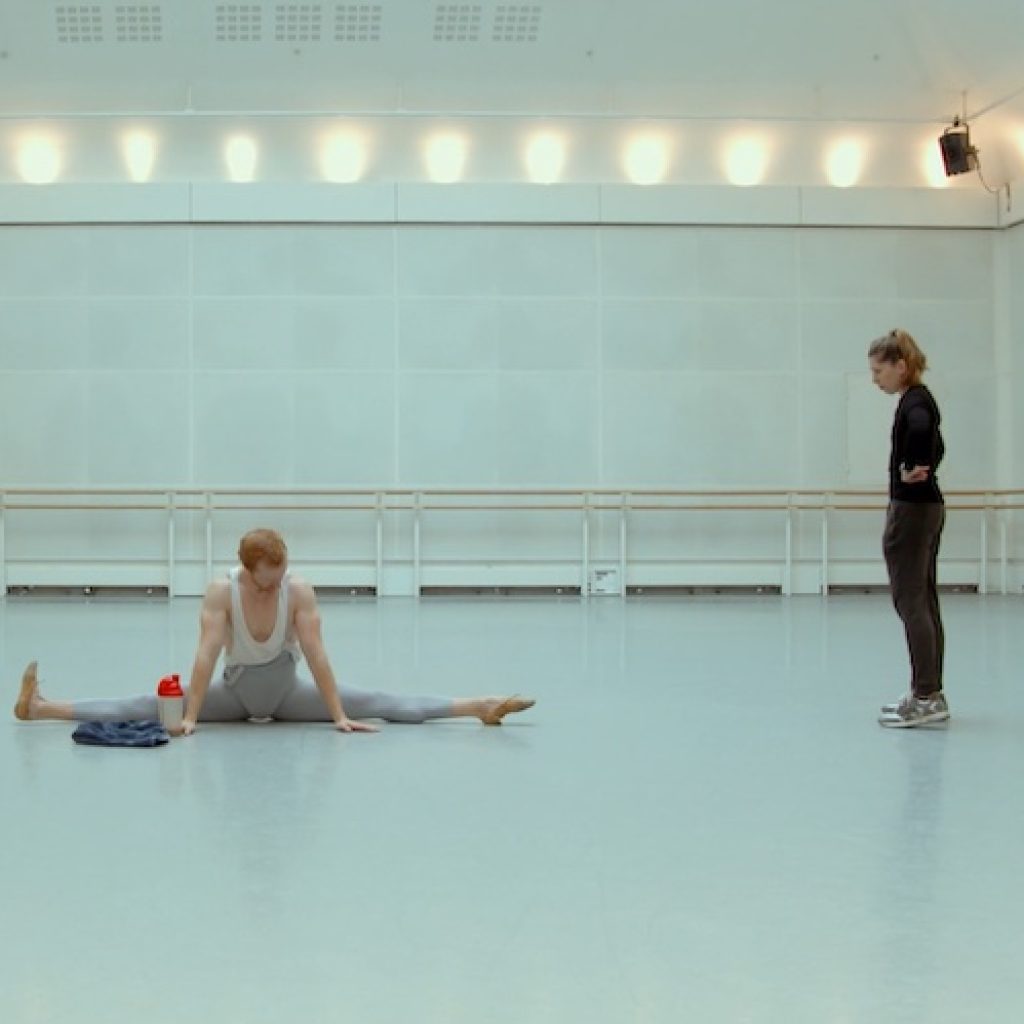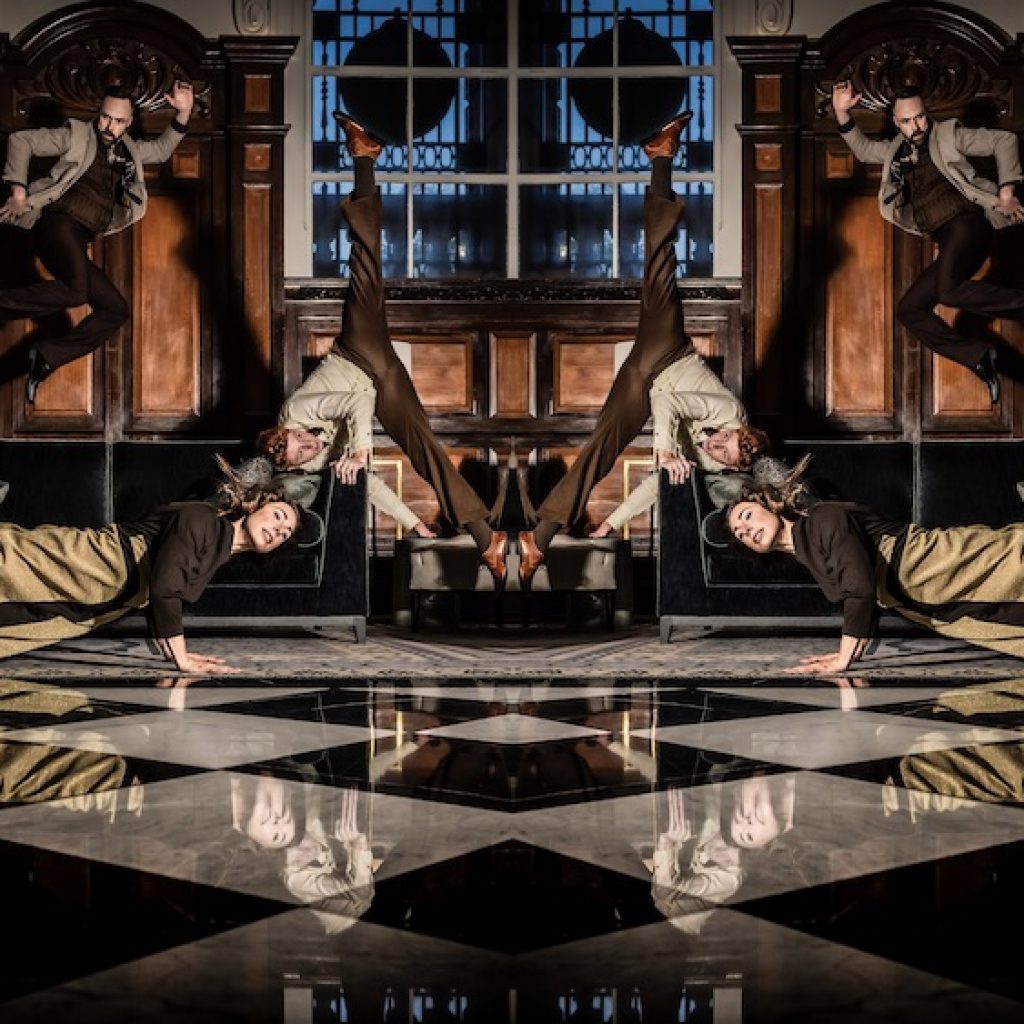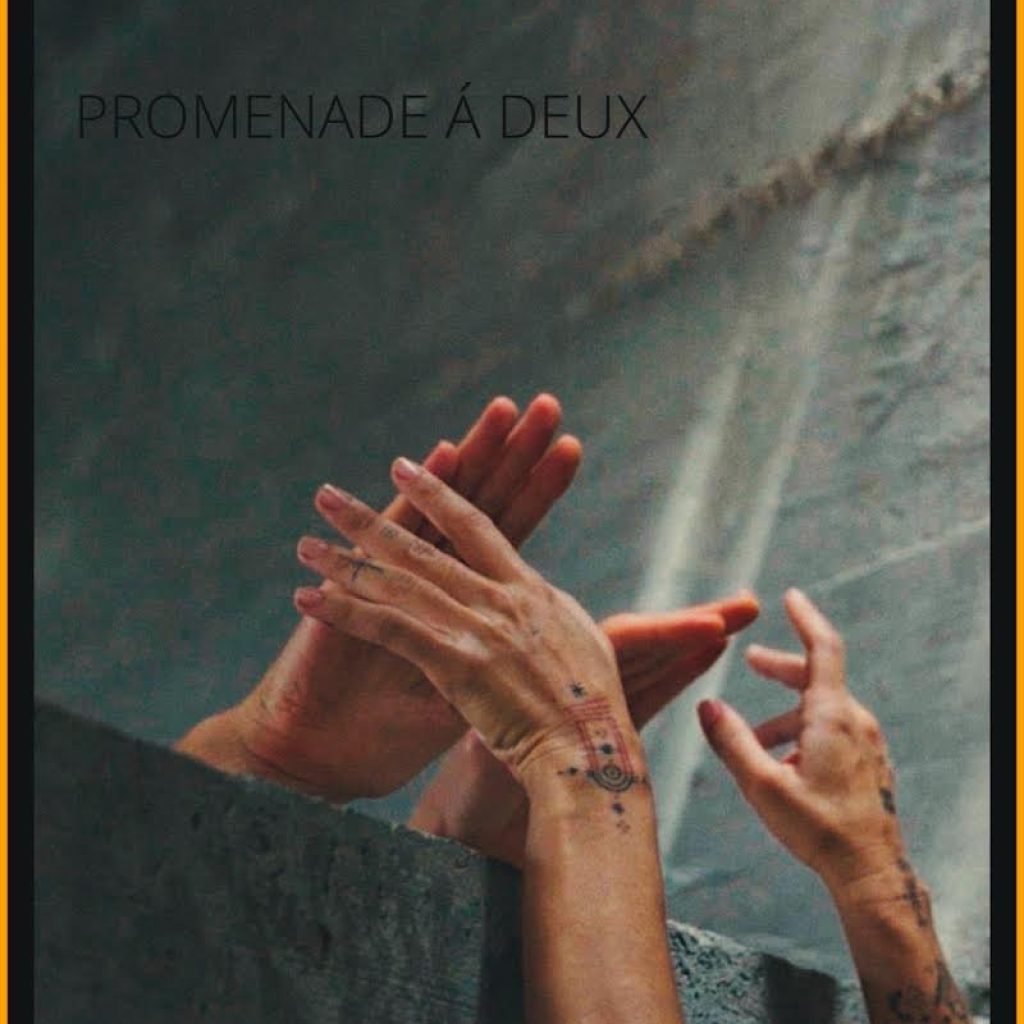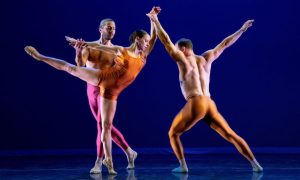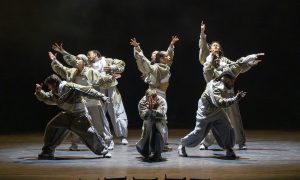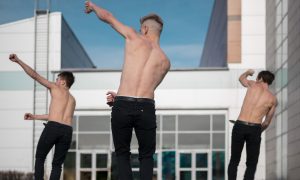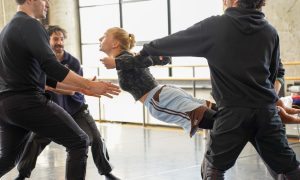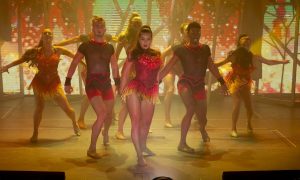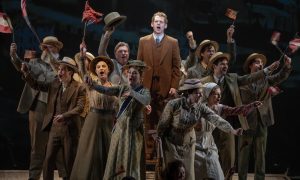Symphony Space, New York, NY.
February 21-24, 2025, viewed via press screeners.
The world locked down in early 2020 – yet dance artists kept their fire for creating and sharing their creations. Many explored dance films for the first time, and many of their audiences also experienced it for the first time. Yet, contrary to what some seem to realize, dance film has been alive and well for as long as film has. It also persists in 2025, strong and fruitful, long after lockdowns have eased.
The 2025 Dance on Camera Festival presented contemporary works demonstrating where dance film, and the larger dance field, is today: bold, highly multifaceted, seeking intelligent evolution. It also paid homage to its much older roots in works of decades past. Both deserve our respectful attention, and are more than worth invested watches…popcorn and a drink to accompany being not a bad idea! The following works are but a small taste of the vibrant work on offer from the festival.
The U.S. premiere of Resilient Man (2024), directed by Stéphane Carrel, is a soul-stirring documentary illustrating Steven McRae’s perseverance through injury, rooted in tenacious love for the art of dance. McRae, a principal with The Royal Ballet, experienced a snapped Achilles tendon (while onstage). The film shares the story of him returning to performance, with all of the challenges and treasures embedded in such a journey.
It’s strikingly honest and transparent in what it shares, from precious moments with family to vulnerable discussions around the mental hurdles of the injury recovery process. There’s a satisfying blend of montage and longer scenes – allowing viewers to feel a part of many moments along the path as well as the deeper nuances of more significant moments.
The film also brings us into the rhythm of a dancer’s daily life; it begins with McRae waking up, showering, getting to the studio and weight-training. At the same time, McRae’s voiceover shares deeper thoughts and truths on injury, recovery and the level of control over what’s happening in his body. The contrast there feels notable. He describes having thought he’s in control of the process, but that he has come to understand there is much he can’t control; recovery will be a much more long-standing process through his career and beyond.
That cuts to McRae working with a coach, physical therapist and masseuse – offering a window into the tools it takes to return to the stage. A heartbreaking moment has McRae sharing, “It went through my head, ‘What if I can’t dance anymore?’” – then detailing the anxiety around finding the right balance of doing sufficient work toward recovery, but not too much (which can be counter-productive). There is clearly so much mental weight at hand.
In another striking contrast, that brings us into the sweet joy of time with family. Back in the studio, as he works toward his first program back – Romeo and Juliet – we see an Exhibit A of dancer ambition; his coach urges him to overcome the pull to turn more pirouettes just because it’s what you’re drawn to do: what’s “in your blood,” as McRae puts it.
For all of that internal baggage, McRae also expresses gratitude for what this process has offered him. “Would I go back and change it? No, this is my story now,” he affirms. Speaking with students of The Royal Ballet School, he shares how his injury and recovery has taught him the importance of holistic self-care, and the risks in not listening to the body’s warning whispers.
As the film progresses to a full company rehearsal of Romeo and Juliet, although there had been short snippets of him dancing before that, we get to fully experience his movement quality — the softest ease from the most rock-steady foundation, the brightest smile illuminating it all and demonstrating his pure love for it all.
A section leading up to the big premiere has a relative lengthiness, one that underscores how anxious feelings leading up to something like that can make time move as slow as molasses. His coach reminds him to not let anything going wrong get him mentally spiraling, as dancers are unfortunately apt to do. That’s among many of the film’s illustrations of challenges dancers face – physical, mental, spiritual – in order to do what their heart and soul need them to do.
The film also presents frank assertions of how we can ease those challenges, with intention and intelligence – those that the field is fortunately opening up to. Exhibit A: McRae describes how he began to strength train as part of his injury recovery, and challenges the narrative that such work is “not for dancers” (one which the field has thankfully begun to abandon in recent years).
He notes how he does it partly so that he can have the energy to give it his all in rehearsal and still run around with his children the next day. That exemplifies another of the film’s important themes: the treasures in life outside the studio, those that are just as important (arguably more important) than what happens in the studio. Another important message for dancers comes soon after that, from another coach, who encourages McRae to welcome the artistry that grows as the body’s abilities change with age – to “build a story” along with that naturally happening.
For his part, he comments poignantly on the need for the profession’s culture to encourage greater longevity in dancers – which would allow for more of that kinetic storytelling of the artistry gained through life experience. We see that experience-colored artistry in action as he rehearses Rhapsody — footage demonstrating even more of his leaping power and stamina, a catlike explosive grace, but also the deeper nuances and spirit that truly makes it art.
The film presents many more twists and turns of McRae’s journey – but, dear reader, you’ll have to enjoy it yourself to encounter those. All in all, it’s a powerful opportunity to hear a dancer’s true voice – both literally and figuratively, to hear their story from them when most often we only see the final product of all their dedication.
Powerfully, toward the end, the film reminds us of the youthful bliss of movement and what keeps driving McRae’s desire to express. For every dancer who’s wondered why they keep going through it all, who feel their fire for it waning, it’s a powerful call to come back to what made one fall in love with it in the first place.
Claire Marshall’s Permutations (2022, theatrical world premiere at this festival) is a captivating intersection of nostalgia and edgy postmodernism – kinetically grounded in stylized pedestrian vocabulary and fresh athleticism. Immediately catching my eye is a fascinating editing frame of quadrants – offering varied views of the same scene. Highly intentional gaze, proxemics and rhythm applied to quotidian actions characterize the beginning’s pedestrian movement.
News playing over TV dinner reinforces that quotidian quality – yet, who knows what earth-shaking events the newscaster is describing? That sets the stage for the alluring contrast and tensions characterizing the work. The athleticism in movement escalates soon, however – right around the same couch where they had moved in a much more quotidian manner. The same space can hold these opposing ways of being in, and moving through, the body.
As the film progresses, such athleticism contrasts further mundane actions in other quadrants — of cooking, ironing clothes, tidying up. These deeper physical expressions become “permutations” into the everyday across the screen – perhaps also vice-versa. The four quadrants do bring a lot to visually absorb, as a viewer, yet it all stays streamlined and moderately paced enough that such absorption is achievable.
Additionally, just like with anything, we will be drawn to what interests us most, and therein miss other things. The positive there is always more to discover. The dancers’ movement through domestic spaces – the kitchen, bathroom, makeup vanity – certainly has many rich layers to continue investigating. Some of it is notably virtuosic, with compelling navigation of tight spaces.
Even more edginess enters later in the film – through an electronica score and sassy, sultry presence from (and interactions between) personas on screen. It remains satisfyingly rhythmic and kinetically integrated through these bold, unconventional choices. Part of that boldness is interior design straight out of the Brady Bunch — 1970s avocado and earth tones with exposed brick, as they play Twister and sparklers illuminate a fancy cake. A nostalgia at hand interfaces with something much fresher and more innovative.
Closer to the end, white noise static echoes the classic TV screens of the beginning – encouraging a feeling of dramatic climax. Faster cuts between events in different personas’ storylines further builds that drama. Such structure underscores how the rhythms of daily life can wildly differ for separate people even as they happen side-by-side. Both visual intrigue and food for thought are plentiful.
The newscaster reappears toward the end, pointing back to that juxtaposition of the everyday and the earth-shaking. Such opposing forces in dynamic tango, intentionally and skillfully shaped, makes this film both enticingly provocative and an aesthetic treat to experience.
Hannah Camarata’s P R O M E N A D E – A – D E U X (2024, also with a U.S. premiere at this festival) is a kaleidoscope of striking images and memorable movement. The color palette is uniquely multichromatic. Images are just as unique: from a dancer resting her head under another’s feet dangling off a ledge, to a bouquet hanging off another ledge in sunset, to water streaming down yet another wall. Editing of fast transitions between these visuals creates that intriguing kaleidoscopic quality. The images’ linear quality instills a sense of promenade, or walk – of moving straight along a path, as steadily as the bluegrass-inspired score does in its rhythm.
At the same time, the movement vocabulary beautifully integrates spiral and curve into such linearity. That brings richness to the shapes that continue filling the screen. All steadily proceeds, continuing to present the completely unexpected. At the same time, there are clear visual motifs – those that create something memorably imagistic. Just as with Permutations, there’s a keen balance and integration of opposing qualities. That delivers something enticingly confrontive and almost soothing.
Lester Horton’s Caribbean Nights (1953) presents something much more classic, but with aesthetic and cultural freshness likely daring for its time. It’s wonderful to experience some dance history amidst all of this forward-thinking work of our time – while this classic work was also likely quite innovative when it premiered.
Carmen de Lavallade and James Truitte dance in dynamic conversation — orbiting each other as hips figure-eight from quick footwork, arms making serpentine patterns. Their fiery confidence matches the red all around them and the passion in movement. Dancers with candelabra (of The Lester Horton Dancers) surround them, angling hips from their knees as they lean back.
A lavish setting, greenery of potted plants punctuating pristine white and earth-tone interior structures, is a container for all of this visceral richness. It’s a short nugget of aesthetic fire, culturally informed and refreshingly unique, from the deep, voluminous annals of dance history.
It’s also further demonstration that dance film has been alive and well over the decades, evolving and proliferating just as concert dance has. Programming such as the Dance on Camera Festival is part of chronicling the path the art form takes over time – as well as platforming artists with voices worth hearing and increasing exposure to what they have to share. I look forward to future installments, to witnessing the medium’s continued evolution.
By Kathryn Boland of Dance Informa.


